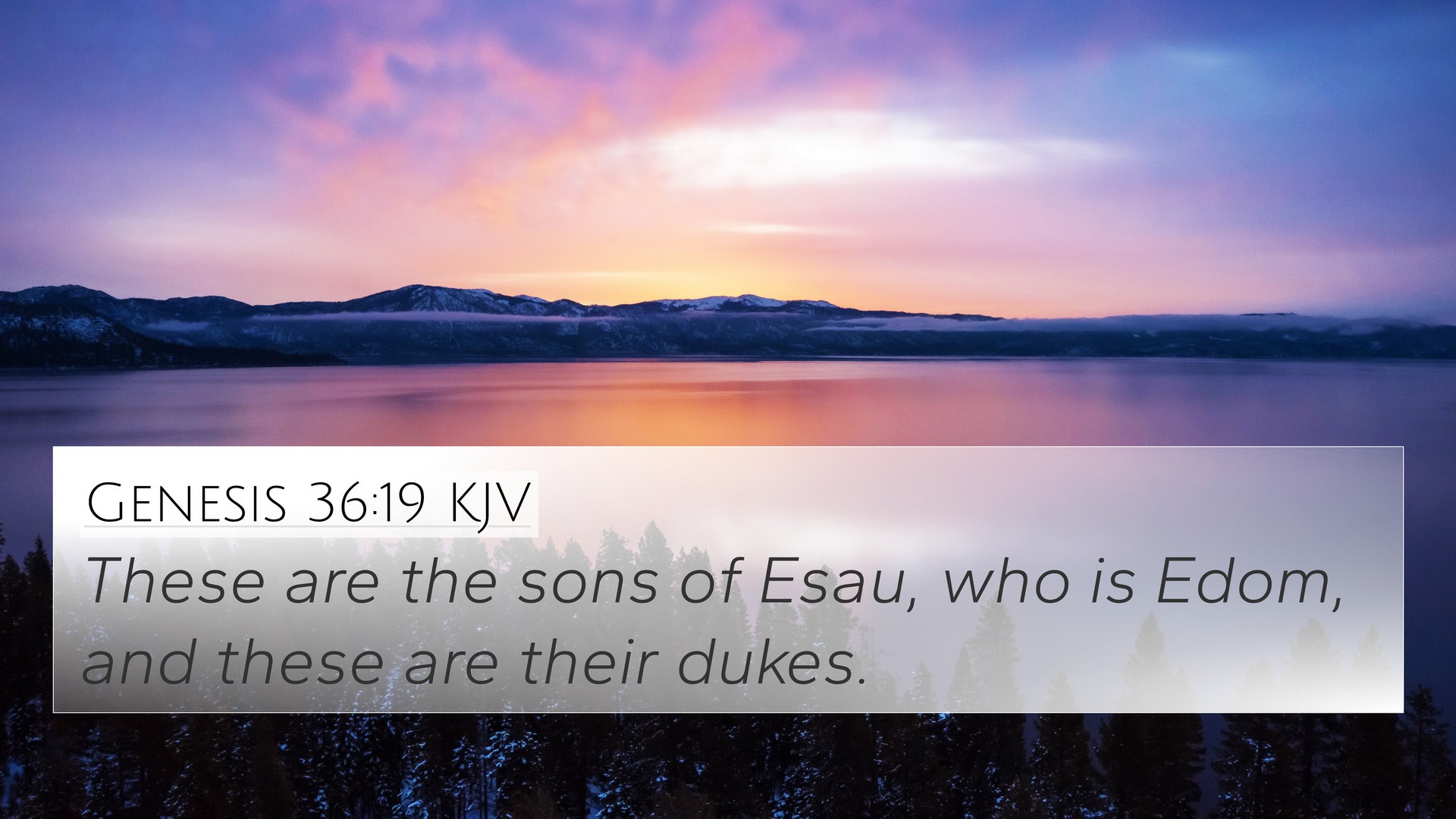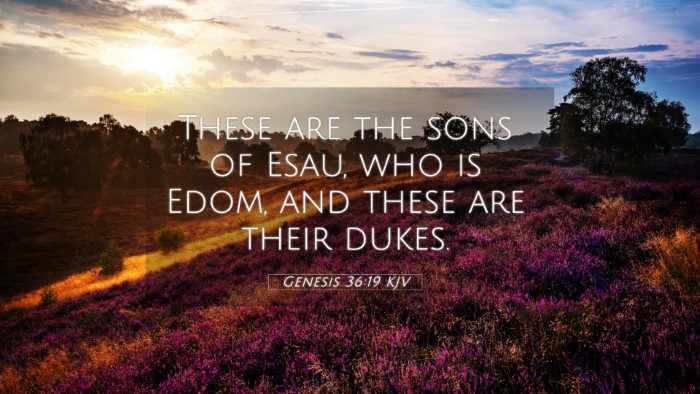Understanding Genesis 36:19
Genesis 36:19 states: "These are the sons of Esau (who is Edom), and these are their dukes." This verse is a significant part of the genealogical narrative that chronicles the descendants of Esau, who is identified as Edom. To grasp the meaning of this verse, we can draw insights from various public domain commentaries such as those by Matthew Henry, Albert Barnes, and Adam Clarke.
Genealogy from a Biblical Perspective
Genealogies serve an important purpose in the Scriptures by establishing lineage, heritage, and the fulfillment of God's promises. This particular verse emphasizes the transition from individual to nation as it marks Esau's sons becoming dukes, indicating their prominence and the formation of clans within the region of Edom.
Commentary Insights
- Matthew Henry: Henry highlights the importance of recognizing Esau's legacy, noting that his descendants, the Edomites, played a significant role in Biblical history. He also stresses the dual identity of Esau as both a person and a nation, affirming the importance of this genealogy.
- Albert Barnes: Barnes points out that the term 'dukes' signifies leaders or chiefs in Edom. He emphasizes that these familial connections are critical in understanding the descent of nations and their interactions throughout Biblical history.
- Adam Clarke: Clarke summarizes the significance of Esau’s sons, suggesting that their rise to leadership reflects the fulfillment of God's plan for Esau’s line. He elucidates the origins of the Edomites in relation to the Israelites, positioning this narrative within the broader context of Scriptural history.
Cross-References and Their Significance
This verse connects with several other scriptures that deepen our understanding of the themes presented:
- Genesis 25:30: Where Esau sells his birthright for a meal, highlighting the choices that shaped his legacy.
- Genesis 32:3: Esau's reconciliation with Jacob, showing the evolution of their relationship.
- Malachi 1:2-3: God’s love towards Jacob and hatred towards Esau introduces the spiritual ramifications of their descendants.
- Romans 9:13: Paul references the twin brothers, revealing the complexities of divine election.
- Obadiah 1:1-21: The prophecy against Edom elaborates on the fate of Esau’s descendants.
- Numbers 20:14-21: Israel's request to pass through Edom, providing a historical connection between the nations.
- Deuteronomy 2:4-5: God commands Israel not to contend with Edom, reinforcing the distinction between the two nations.
Thematic Connections in Scripture
The genealogy of Esau provides a thematic bridge between various biblical concepts:
- Divine Sovereignty: God's purpose in choosing Jacob over Esau is a pivotal theme that runs throughout scripture.
- Conflict and Reconciliation: The interactions between the Edomites and Israelites are fraught with conflict yet also opportunities for reconciliation.
- Covenantal Promises: The narratives surrounding Esau's lineage often recur in discussions about God's faithfulness to His covenant with Israel.
Tools for Understanding Biblical Genealogy
For those studying the Bible, cross-referencing is a vital tool to identify connections between verses:
- Bible concordance: Utilize a concordance to locate specific references related to Esau and Edom.
- Bible cross-reference guide: A guide can illuminate themes and cross-references not immediately apparent in reading.
- Cross-reference Bible study: Engage in structured studies to explore how one’s understanding of Esau can be enriched through related scriptures.
Conclusion
Genesis 36:19 serves as a pivotal verse within the broader scope of biblical genealogies. Understanding this verse through various commentaries and utilizing tools for cross-referencing can enhance our comprehension of the connections and themes within scripture. As we study, it is essential to see how verses relate to one another, learn from biblical characters, and appreciate God's overarching narrative.


